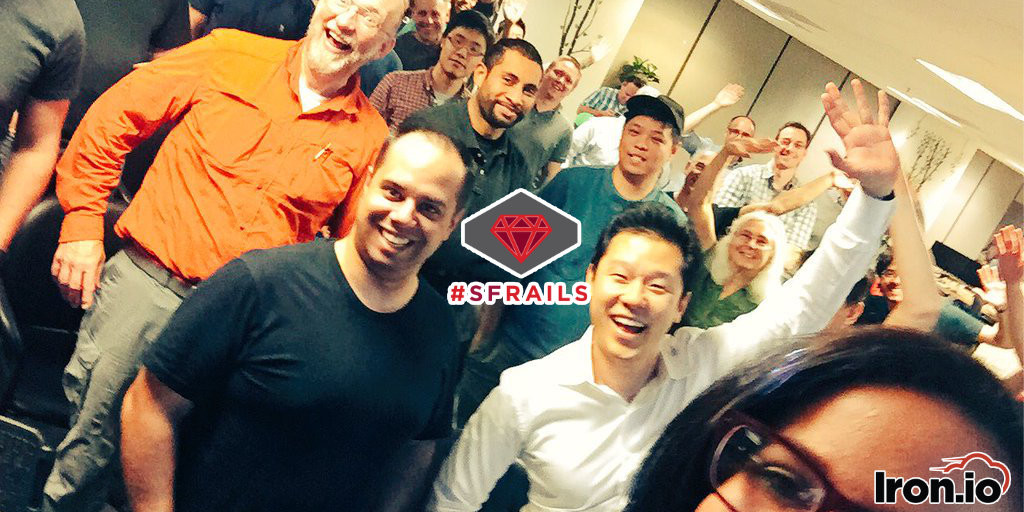SF Rails: Reduce Complexity and Simplify Code
Last night we swung by the snazzy DevBootCamp offices. Our goal? To learn from the fine folks joining us at the SF Rails meetup.
The topics included DCI, a comparison of static site generators to traditional CMS, and how workers are better fit than functional programming for reactive infrastructure.
Heady stuff! Keep reading for a preview of each topic, and a link to each speaker’s slides.
Let’s Talk About DCI
Bloc‘s Jared Rader kicked off the evening with a talk about DCI. You don’t know what DCI is? Hah, newbie.
Actually, I must confess that I hadn’t heard about DCI until listening to Jared speak. His talk began by discussing the problem that DCI solves. In MVC type apps, a lot of work winds up in the model. Which is great most of the time, until bugs pop up.
At that point, debugging can become a multi-pane, multi-window, pain in the butt. DCI (Data, Context, Interaction) aims to solve that by splicing models into simpler models that more accurately capture programmer intent.
“Simple” is a relative term as there is some .method_missing and other black magic that powers a few DCI implementations. Jared covered a few of the popular Ruby approaches, and did some pros/cons evaluation in his slides.
To see what DCI is all about, check out his slides below:
Battle of the static sites – WordPress vs Jekyll
Mike Neumegen is a kiwi, organizer of JekyllConf, and boy does he love static site generators. At least, he loves them as a developer. He recognizes that they also happen to be a bit tricky for novices. Mike suspects this might be why CMS like WordPress are so popular.
That must be why he started CloudCannon. In his talk, Mike talks about how static site generators can be made friendlier for non-developers, while preserving the good bits that programmers know and love.
What are the key advantages of static site generators? The full source can be hosted in git (or another CVS), they’re easy to add webhooks to (eg CI), and finally they don’t require much additional knowledge beyond basic HTML and CSS.
Mike espouses more in his slides, which are easy to find by clicking below:
Workers and the Rise of Reactive Infrastructure
The last talk of the evening was by me! I’m Paul Burt, and I’m a developer evangelist at Iron.io. My talk centered on Workers, and how they tie in nicely with philosophies like the Reactive Manifesto.
Both functional programming and reactive infrastructure are about simplifying how we manage our code. No wonder then, that functional programming is a traditional companion for reactive infrastructure. In this talk, I argue that while FP is powerful, its achilles heel is the high learning curve.
Functional code is wonderful to read, but takes time to learn how to correctly write. Workers, offer many of the same benefits as functional programming, but require minimal investment for most developers to use.
What does all of that mean? For any decent sized team, retraining everyone to do FP can involve a lot of work. With that in mind, workers are an ideal solution for producing scalable, easy to manage code.
Want to know more about FP, workers, and reactive infrastructure? Follow the link to my slides below:
Put Our Stamp on the Camp
A big thanks to DevBootCamp for hosting SF Rails!
Do you have a speaker you’d like us to get on stage at our next event? Would you like to speak about something near and dear to your heart?
We’re always on the lookout for engaging content. Reach out, and let us know what you’d like to see at the next SF Rails!


